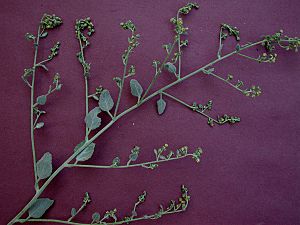Twinbugs facts for kids
Quick facts for kids Twinbugs |
|
|---|---|
 |
|
| Dicoria canescens | |
| Scientific classification | |
| Kingdom: | |
| (unranked): | |
| (unranked): | |
| (unranked): | |
| Order: | |
| Family: | |
| Tribe: | |
| Genus: |
Dicoria
Torrey & A. Gray
|
Dicoria is a special group of flowering plants often called twinbugs. These plants are part of the huge daisy family, which also includes sunflowers! You can find them growing in the wild across the southwestern United States and northwestern Mexico.
Contents
What Are Twinbugs?
Dicoria plants are known for their unique seeds, which look a bit like two small bugs stuck together. This is how they got their fun nickname, "twinbugs"! They are a type of herbaceous plant, meaning they have soft stems instead of woody ones like trees.
Where Do Twinbugs Grow?
These interesting plants are native to specific areas. They thrive in the dry, sunny regions of:
- The southwestern United States, including states like California, Nevada, Arizona, Utah, New Mexico, and Colorado.
- Northwestern Mexico, especially in areas like Baja California and Sonora.
They are well-suited to desert and semi-desert environments. This means they can handle hot temperatures and not a lot of rain.
How Do Twinbugs Survive in Dry Places?
Plants like Dicoria have special ways to live in dry places. They might have roots that spread out wide to catch any rain. Their leaves might also be designed to lose less water. This helps them stay alive when water is scarce.
Types of Dicoria Plants
There are a few different kinds, or species, of Dicoria. Each one has its own specific places where it grows. Here are the main ones:
- Dicoria argentea: This species is found in northwestern Mexico, particularly in the state of Sonora.
- Dicoria calliptera: You can also find this type in northwestern Mexico, especially in Sonora.
- Dicoria canescens: This is the most widespread species. It grows in both northwestern Mexico (in Baja California and Sonora) and across many states in the United States.
The Daisy Family Connection
Dicoria belongs to the Asteraceae family. This is one of the largest families of flowering plants in the world! It includes many well-known plants like:
- Sunflowers
- Daisies
- Dandelions
- Lettuce
Plants in this family often have flowers made up of many tiny florets grouped together. This makes one big "flower head" that looks like a single flower.
Why Are Plant Families Important?
Scientists group plants into families because they share common features. This helps us understand how different plants are related. It also helps us learn about their life cycles, how they reproduce, and what environments they prefer.
Life Cycle of a Twinbug Plant
Like most flowering plants, Dicoria plants go through a life cycle. They start as seeds, grow into mature plants, produce flowers, and then make new seeds.
Reproduction of Twinbugs
Dicoria plants reproduce using their flowers and seeds. Insects or the wind can help carry pollen from one flower to another. This process, called pollination, helps the plant make new seeds. The unique "twinbug" seeds are then spread, often by wind or animals, to new places where they can grow.
See also
 In Spanish: Dicoria para niños
In Spanish: Dicoria para niños

